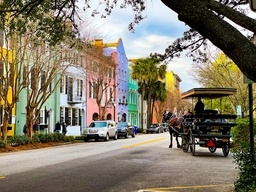Owning a short-term rental (STR) isn’t just about hosting, it’s also a savvy tax strategy. By combining a cost segregation study, leveraging bonus depreciation, and qualifying under IRS material participation rules, you can significantly accelerate depreciation deductions—boosting your cash flow today and potentially offsetting W-2 income.
Especially after the Big Beautiful Bill has been passed in 2025. In this article, we will answer some of the most common questions related to bonus depreciation and cost segregation, as well as show you a real-world example.
Why These Tax Strategies Matter for STR Investors
- Cost segregation identifies parts of your property—like furnishings, fixtures, or landscaping—that can be reclassified into shorter depreciation timelines (5, 7, or 15 years) instead of the standard 27.5 or 39 years, unlocking early tax savings.
- Bonus depreciation, currently at 100% in 2025 after passing the Big Beautiful Bill, allows you to fully write off those short-life assets in the year they are placed in service—often by using a cost segregation study to determine what’s eligible.
- Material participation rules transform STRs into business activities—not passive investments—if you meet IRS thresholds like average stays under 7 days and active involvement. This means those depreciation losses can offset earned income like W-2 or business earnings.
What Investors Need to Know (Frequently Asked Questions)
1. What does bonus depreciation mean?
Bonus depreciation (referred to in the tax code as the special depreciation allowance under Section 168(k)) is an incentive that lets taxpayers immediately deduct a portion of the cost of qualifying property in the first year it’s placed in service, in addition to any Section 179 deductions.
STR investors can deduct a large portion of their property’s cost basis up front (furniture, appliances, improvements) instead of spreading it over decades. This creates immediate tax savings and boosts cash flow.
2. How does bonus depreciation work?
You first deduct any allowable Section 179 expense for qualifying property. Then you apply bonus depreciation to the remaining basis (if the property meets eligibility criteria) in that same year. Finally, the remainder (if any) is depreciated over the asset’s normal recovery period. This method accelerates deductions into Year 1, lowering taxable income more quickly.
3. What assets qualify for bonus depreciation?
Qualifying property must meet these conditions:
- Must be tangible property (excluding land) that’s depreciated under MACRS.
- Must have a useful life of 20 years or less, or be certain specialized property (e.g., computer software, water utility property, film or live productions, qualified improvement property) placed in service within a specified timeframe.
- Can include used property—but only if it meets IRS conditions regarding original use, acquisition, and basis determination
Assets common in STRs – appliances, flooring, landscaping, furnishings, security systems – often fall into 5-, 7-, or 15-year categories and qualify for bonus depreciation. Cost segregation studies identify and separate these assets.
4. What property can be depreciated?
According to Publication 946, you can depreciate most tangible assets that you own and use in a business or income-producing activity – like buildings, machinery, vehicles, furniture, and equipment – as long as they have a determinable useful life. Intangible assets (e.g., patents, copyrights, certain software) may also qualify.
STR owners can depreciate most property used to generate rental income: the building, plus improvements and equipment. The land itself is not depreciable, but nearly everything else (inside and outside) can be.
5. What is 100% bonus depreciation?
100% bonus depreciation allows you to deduct the entire cost of qualifying property in the year it’s placed in service, effectively a full expensing method. Under current law, this treatment applies to eligible property acquired and placed in service after January 19, 2025. This is why STR owners can profit from the Big, Beautiful Bill.







